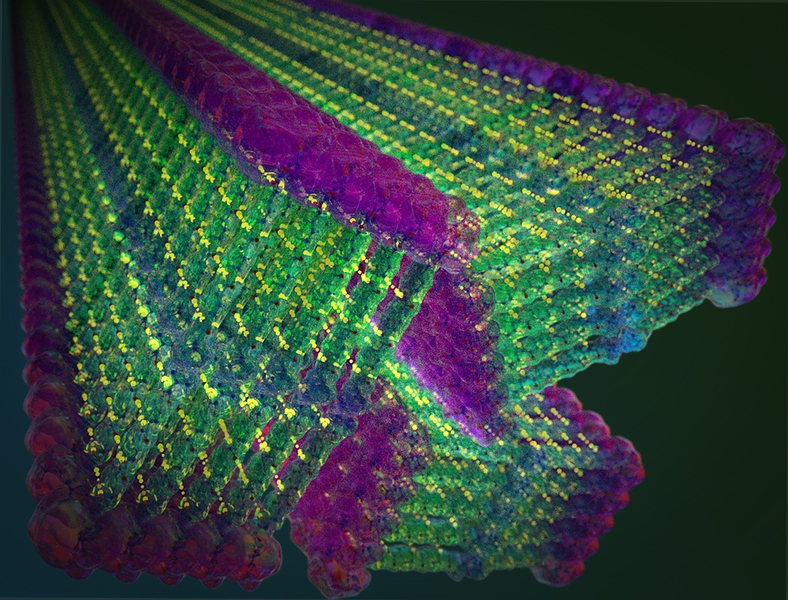2021/1/25 アメリカ合衆国・マサチューセッツ工科大学(MIT)

・ MIT が、CO2 を有用な化学物質や燃料に変換する二酸化炭素還元反応(CO2RR)の課題を解決する、石油・ガス産業で利用される流体力学のコンセプトを応用した技術を開発。
・ CO2RR システムでは、銅などの材料による電極触媒を取り付けた容器内の水溶液に CO2 を含んだガスを注入し、電圧を加えて化学反応を起こし、燃料や他製品に変換できる炭素化合物を生成する。
・ このようなシステムでは反応の進行が速く、触媒への供給前に CO2 を使い切ってしまうこと、また、それにより競合する水素発生反応(HER)が起こり、目的の反応用のエネルギーを消費してしまうという 2 つの課題がある。
・ 今回、触媒材料の近くにガスを引き寄せる機能を持つ表面を配置することでこれらの課題に対処。シリコンに微細なピラミッド型テクスチャー処理した同表面は、超疎水性でありながら「プラストロン」と呼ばれる滑らかな高濃度の CO2 層をその付近に留まらせる。これにより、注入される CO2 が触媒付近に保持され、CO2 変換反応の最大化が可能となる。
・ 色素ベースの pH インジケーターによりテスト用セルで CO2 の濃度勾配を可視化したところ、プラストロンの CO2 濃度が上昇していることを確認。研究室での一連の実験では、炭素変換反応速度がほぼ倍増となり、反応時間も延長した。
・ また、エチレン、プロパノールとエタノールをより多量に生成し、HER の発生も大幅に低減。さらに、同様な電気化学反応システムではこれまで見られなかったアセトンとアセテートも生成した。
・ 本研究は、MIT Energy Initiative を通じイタリアの半国有石油・ガス会社の Eni.S.p.A およびカナダ自然科学・工学研究会議(NSERC) PGS-D postgraduate scholoarship が支援した。
URL: https://news.mit.edu/2021/carbon-capture-efficiency-0125
<NEDO海外技術情報より>
(関連情報)
Cell Reports Physical Science 掲載論文(フルテキスト)
Catalyst-proximal plastrons enhance activity and selectivity of carbon dioxide electroreduction
URL: https://www.sciencedirect.com/science/article/pii/S2666386420303489?via%3Dihub
Abstract
Electrochemical reduction of carbon dioxide (CO2RR) is an attractive approach toward converting CO2 to solar fuels. Novel catalyst chemistries and morphologies may provide high selectivity to both one-carbon (C1) and two-carbon (C2) products over hydrogen; however, the limited aqueous solubility of CO2 restricts the CO2RR current density. Here, we demonstrate how gasphilic bubble-trap surfaces enhance mass transfer and enrich and maintain CO2 concentration during CO2RR by forming a catalyst-proximal plastron layer, consequently increasing the CO2RR activity on both smooth and nanostructured copper as compared to the conventional headspace or bubbling modes of CO2 delivery. The H2 Faradaic efficiency is suppressed from 33% to 13% on smooth copper and from 62% to 33% on nanostructured copper, accompanied by enhanced formation of C2+ products, including ethylene, propanol, and ethanol, and >1% acetone and acetate. We highlight the importance of the catalyst-proximal plastron approach by comparing against recent aqueous-phase CO2RR studies.



